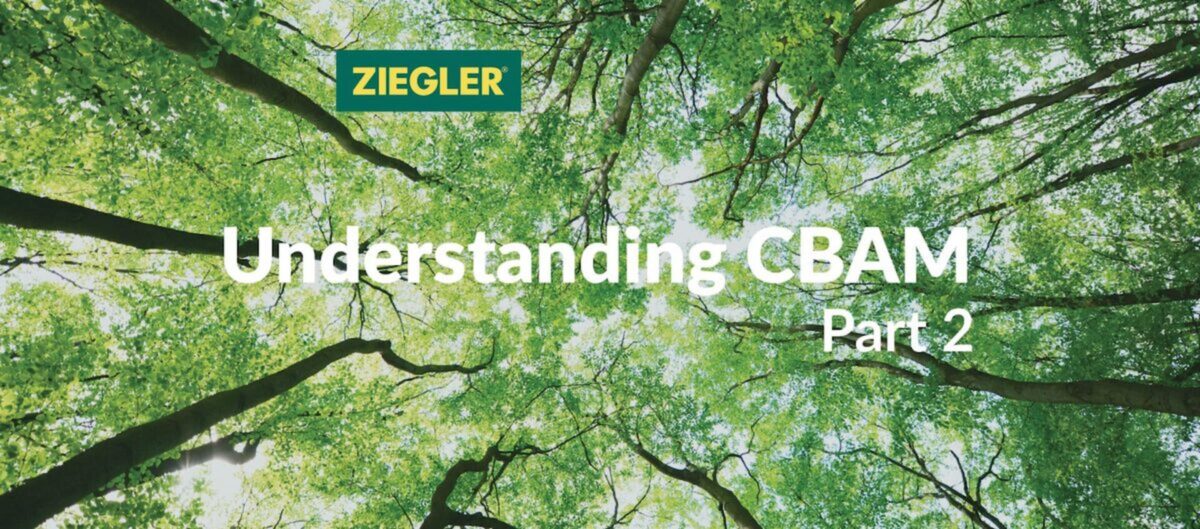
The Carbon Border Adjustment Mechanism (CBAM) is a ground-breaking initiative by the European Union (EU) to tackle carbon leakage and promote cleaner industrial production globally. With its ambitious aim to achieve climate neutrality by 2050, the CBAM imposes a carbon price on imported goods based on their carbon emissions, incentivising domestic and international producers to reduce their carbon footprint. Its implementation began in May 2023.
The Carbon Border Adjustment Mechanism (CBAM) unfolds through a diligent two-phase approach. Initially, the focus is on precise assessment and pricing of carbon content in carbon-intensive goods like cement and fertilisers, requiring comprehensive data on energy consumption and emissions from the production process. This phase aims to incentivize cleaner production methods by assigning a carbon price to the goods, underpinned by guidelines ensuring a transparent evaluation process.
Transitioning into the implementation phase, CBAM mandates importers of such goods to report emissions and purchase carbon allowances equivalent to their products’ carbon content, aligning the costs with the EU’s Emissions Trading System (ETS) pricing. This ensures a fair distribution of carbon pricing burdens between local and international producers, mitigating carbon leakage.
Compliance is pivotal, enforced through strict monitoring mechanisms including documentation inspection and emissions data verification. Non-compliance may attract penalties, impacting business operations within the EU market. Over the long haul, adherence to CBAM policies is suggested to promote not only emissions reduction but also sustainable growth and fair global competition.
In the initial phase of implementing the Carbon Border Adjustment Mechanism (CBAM), we focus on assessing and pricing carbon emissions related to imported goods from non-EU countries. The primary objective is to establish a fair price for the carbon emitted during the production of carbon-intensive goods entering the EU while encouraging cleaner industrial production in non-EU countries
To effectively assess and price the carbon emissions, we examine imported goods’ embedded carbon content, which reflects the total greenhouse gas emissions generated during the production process. By accurately measuring embedded carbon content, we can establish a charge that properly represents the product’s environmental impact and aligns it with our domestic goods’ charges.
One of the main challenges in this phase is to identify and track relevant data for accurate assessment. Legislators collaborate with various stakeholders to gather and verify the necessary information, ensuring the entire process adheres to established standards and transparency requirements.
During the implementation, we acknowledge the potential effects on businesses. The transition towards full implementation in 2027 demands close coordination with trade partners and third countries, keeping their interests in mind.
In conclusion, the assessment and pricing phase is essential in laying a solid foundation for the EU’s CBAM. By developing a robust mechanism for accurately measuring and pricing carbon emissions, the EU strives to create a fair and sustainable market that benefits our environment and sets an example for global climate action.
Phase 2 of the Carbon Border Adjustment Mechanism (CBAM) marks the transition to its full implementation. This phase, starting in 2027, represents a critical juncture in the EU’s strategy to combat carbon leakage and foster a sustainable trade environment.
A key feature of Phase 2 is the introduction of CBAM certificates. These certificates are instrumental in quantifying and managing the carbon emissions associated with imported goods. Businesses will be required to purchase CBAM certificates, correlating to the amount of carbon emissions their imported goods are responsible for. This approach not only ensures a fair and level playing field between domestic and imported products but also incentivizes producers outside the EU to adopt cleaner production methods.
The focus during this phase will be on ensuring seamless integration and compliance with the CBAM regulations. It involves close collaboration with international trade partners and third countries to adapt to these new requirements. The EU is committed to providing guidance and support to businesses and stakeholders during this transition, ensuring a balanced approach that respects the interests of all parties involved.
In essence, Phase 2 of CBAM is a pivotal step towards a more sustainable future. It not only aims to mitigate environmental impact but also strives to encourage global adoption of greener production practices. As we move forward, the EU continues to lead the way in innovative climate action, setting a precedent for environmental responsibility in global trade.
As CBAM unfolds, staying updated with its evolving landscape is crucial for businesses to ensure compliance and strategically position themselves in the market. To aid in this endeavor, we invite you to subscribe to our newsletter. Our seasoned specialists will meticulously curate the most pertinent news and announcements regarding CBAM, delivering them straight to your inbox.